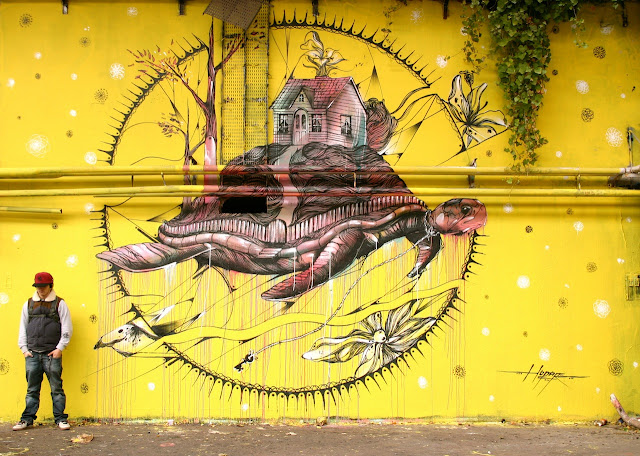Graffiti has been around for thousands of years, since cavemen painted on walls to tell of tales of yesteryear. The majority of people have a natural dislike of graffiti, especially when it’s sprawled all over their neighbourhood. But it is also very popular and can be seen as street art, which is most likely intended to interest people in a similar way that a painting does, rather than to disgust and annoy like standard graffiti does.
As a Part of Gang Culture
Graffiti has come a long way since the days when it was a defining feature of a derelict or rundown part of the neighbourhood. With many young adults wishing to make their mark by tagging their territory, it became an inner city map of gang signs and a visual cue to other people of the neighbourhood that this was their territory. The gang culture of the 70s and 80s only heightened the use of graffiti, as part of a sub culture amongst teenagers and young adults.
Many cities around the globe have tried to tackle the problem of graffiti by allowing dedicated walls to be left to the streets as a place to allow graffiti to be sprayed. This alternative method of controlling graffiti has only helped in a few instances, and overlooked the whole mind-set of why graffiti exists. In its original form, graffiti was a territorial thing; it is intended to mark a territory and allow those who enter it either a welcome or a warning sign.
If anyone knows one thing about graffiti and the term graffiti artists, then the name Banksy will ring a bell. This celebrated artist who prefers to create thoughtful street art in graffiti form is leading a new wave of cultured graffiti artists into becoming the main stream. With his iconic stencilled designs, Banksy has toured the world looking for meaningful places to adorn his work. From occupied Palestine to New York and Sydney, Banksy has changed much about how we think about graffiti and what it means to be a graffiti artist.
It seems that for now, graffiti is here to stay. With iconic symbols of street culture and inspirational artists such as Banksy, graffiti artists have just awoken to a world of partial acceptance in the art world, with the possibility of creating true pieces of art on the buildings and cities that they call home. But while there are a number of artist that are truly talented and deserve to be celebrated, a lot of graffiti has a single purpose - to vandalise people’s property. This is ultimately how graffiti artist can come to have a bad name, despite their undeniable artistic skills.

This comment has been removed by a blog administrator.
ReplyDeleteThis comment has been removed by a blog administrator.
ReplyDelete